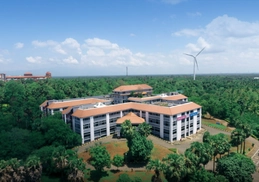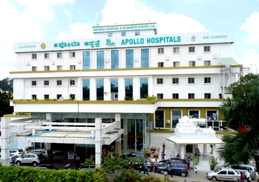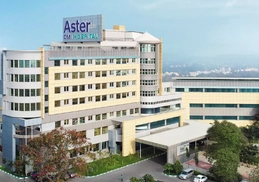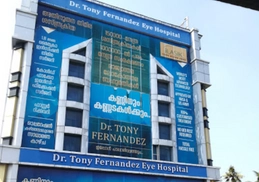
+91 8095511877

+91 8095511877
Macular degeneration is a disease that affects the retina of the eye. It affects those above the age of fifty. Hence the condition is also called Age-related macular degeneration(AMD). It is the most common cause of blindness in those above the age of fifty.
The retina is a tissue attached to the inner wall of the eye on which images form. The macula is the central part of the retina. As a person gets old, the macula will get thinner due to various degenerative changes. This condition is called dry AMD
Wet AMD is a condition that occurs when fragile blood vessels start forming in the retina. It leads to bleeding into the macula to cause various problems.
When these happen, that person will have problems with central vision. The side or peripheral vision will not get affected as the sides of the retina are normal.
The early signs will be a black spot in the center of the field of vision. As the condition gets worse, the dark area will increase in size. Gradually the person will have all kinds of problems with sight in general.
Wet AMD is a condition that occurs when fragile blood vessels start forming in the retina. It leads to bleeding into the macula to cause various problems.
Dry AMD does not have treatments except glasses and special types of contact lenses. Persons with this will have to learn to live with it by making the necessary changes in life.
In those with dry AMD, treatments aim to prevent bleeding into the retina, especially the macula.
There are two types of macular degeneration.
Most of the symptoms of AMD affect your central vision. You will not have problems with your side or peripheral vision.
Some of the risk factors for AMD are
If you have symptoms of AMD, you will have a few tests to know the type and extent of the problem. These include
Macular degeneration treatments aim to control the disease rather than curing it. You will get relief from the symptoms, and the condition will not get worse over time.
You will have glasses or contact lens in the early stages. These help you to focus better to improve your sight. As the condition gets worse, you will need other treatments as well. The treatments will depend on the type of disease you have.
There are no treatments to cure dry AMD. Doctors will try to improve your sight with glasses or contact lenses. Eating a healthy diet, quitting smoking, keeping your blood pressure under check, etc. can help the condition from getting worse.
You will also have counseling about 'living with AMD.' Therapists will guide you to make the best of remaining sight.
You have wet AMD due to the leakage of blood into the retina. So treatments aim to prevent blood from leaking by shrinking the new blood vessels that form.
VEGF or vascular endothelial growth factors are responsible for the formation of new blood vessels in the retina. In wet AMD, the blood vessels that form are weak and fragile that will cause bleeding as they break. These medicines will also help to treat any swelling of the macula.
In anti- VEGF therapy, you will have medicines as injections into your eyes. These medicines suppress the effects of VEGF and prevent new blood vessels from forming.
You will have these injections under local anesthesia. Your doctor will use a small syringe to put the medicines into your eyes. The injections are usually painless, and the whole procedure will take only a few minutes. You will have it is an out-patient procedure, and there is no need for a hospital stay.
You will have three injections every four weeks for three months. The doctors will decide on the total number of injections depending on the medicine you are having. They will also look into how well the treatment is working.
Some of the medicines for anti-VEGF therapy are
Intravitreal injections are usually safe and effective. But there are a few risks like bleeding, swelling, infections, etc. of the eye. Other rare problems include increased eye pressure, formation of cataracts, retinal detachments, etc.
It is one of the most effective treatments for wet AMD that do not respond to medicines.
Your doctor will inject a drug called verteporfin, through a vein in your arm. The drug slowly travels through your body and will reach the blood vessels in the macula of your eyes.
The doctor will then focus on a special laser beam on these blood vessels. The laser activates the drug, which helps to seal the blood vessels. It prevents the leakage of blood to the macula.
The treatment will take about twenty minutes to complete.outpatientore often have it as an out-patient procedure. Most of those who have the treatment will show improvement in central vision.
You will need further treatment sessions after a few months if a new blood vessel starts to form again.
You will have to avoid the sun until the drug goes out of your body, which will be about two days. Or else you may get sunburns due to its effect.
There are a few things that will help you to avoid the onset of AMD. These include


This article has been reviewed for medical correctness and relevance by
Dr Shalini Shetty
Dr Shalini Shetty is the Head of the ophthalmology department at Apollo hospitals, Bangalore. She has over 20 years of experience. She has expertise in all ophthalmic lasers and surgeries. Dr. Shalini has received many awards at both national and international level. She has been the first doctor to give a Braille prescription to visually impaired patients for which she has got appreciation from all over the world. In her career of more than 20 years, she has done tremendous service in this field. Dr. Shalini has experience working both in India and abroad

Ahalia Eye Hospital

Apollo Bangalore

Apollo Health City

Aster CMI

Dr Tony Fernandez Eye Hospital

KIMS Hospital Hyderabad
Frequently Asked Questions
What are the causes of macular degeneration?
What are the early signs of macular degeneration?
Am I at risk of macular degeneration?
What is the treatment for macular degeneration?